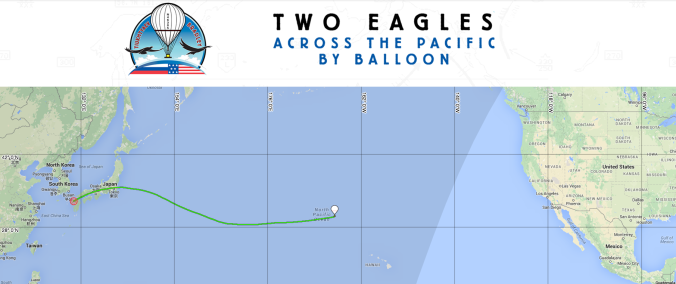Right now, I have friends working on setting two world records. The Two Eagles Balloon Team has launched a helium balloon in Saga, Japan headed for North America to break the distance and duration records in gas ballooning that were set more than 30 years ago. It is a very cool adventure and worth tracking to see how it turns out. What has been really impressive is how many people around the world are tuned in and want to help out. Ballooning is already a pretty close-knit group, and it is still impressive to me. So, why do people rally around something like this?
Do Something Big
I think people like to help out on projects that are big. Bigger than they have ever done, or may ever do. It is very unlikely I will ever attempt or hold a world record at anything. That is OK with me. It is a great privilege for me to work with people who are doing big things. In fact, although I don’t really do much, it is still a great ego boost to say, “I helped with that.”
The same is true of our workplace; people like to join something big. As you lead your organization, is your vision big enough to rally the troops and get them fired up?
Leading is Lonely
We often hear that leadership is lonely. As we blaze a trail into the unknown, we feel like we are on our own. I think that is true when we have a really big vision. It is big because nobody has done it before. If we wanted to feel comfortable we would join the masses and do something mundane.
However, I think the loneliness can also come when we shrink from that big hairy audacious goal and pick something easier. If you are feeling lonely, I suggest two things.
- Gather a Tribe. There are others like you trying to change the world. Find those folks and gather a tribe to support each other. Even if you are in different parts of the world, relating challenges with peers can bring great comfort, support, and insight. In fact, we think this is so important for church leaders that we started a whole section of our company dedicated to Tribes.
- Get a Bigger Vision. While leading the pack is genuinely lonely at times, you should also expect people to come out of the woodwork and ask to join. I am getting calls and emails every day from people who want to support this balloon flight. If you are not getting that support, consider that your vision isn’t big enough. Is it really amazing enough for people to pause and reflect, then ask to join?
Your Next Move
Go do something big. It is ok to be afraid and second guess the path; and do it anyway. If you are feeling all alone on this adventure, then make sure you are really doing something big enough to be worthy of you. You are amazing, let your work reflect that. Once you are convinced you are on a big enough adventure, then gather a tribe. They are out there, go connect.



